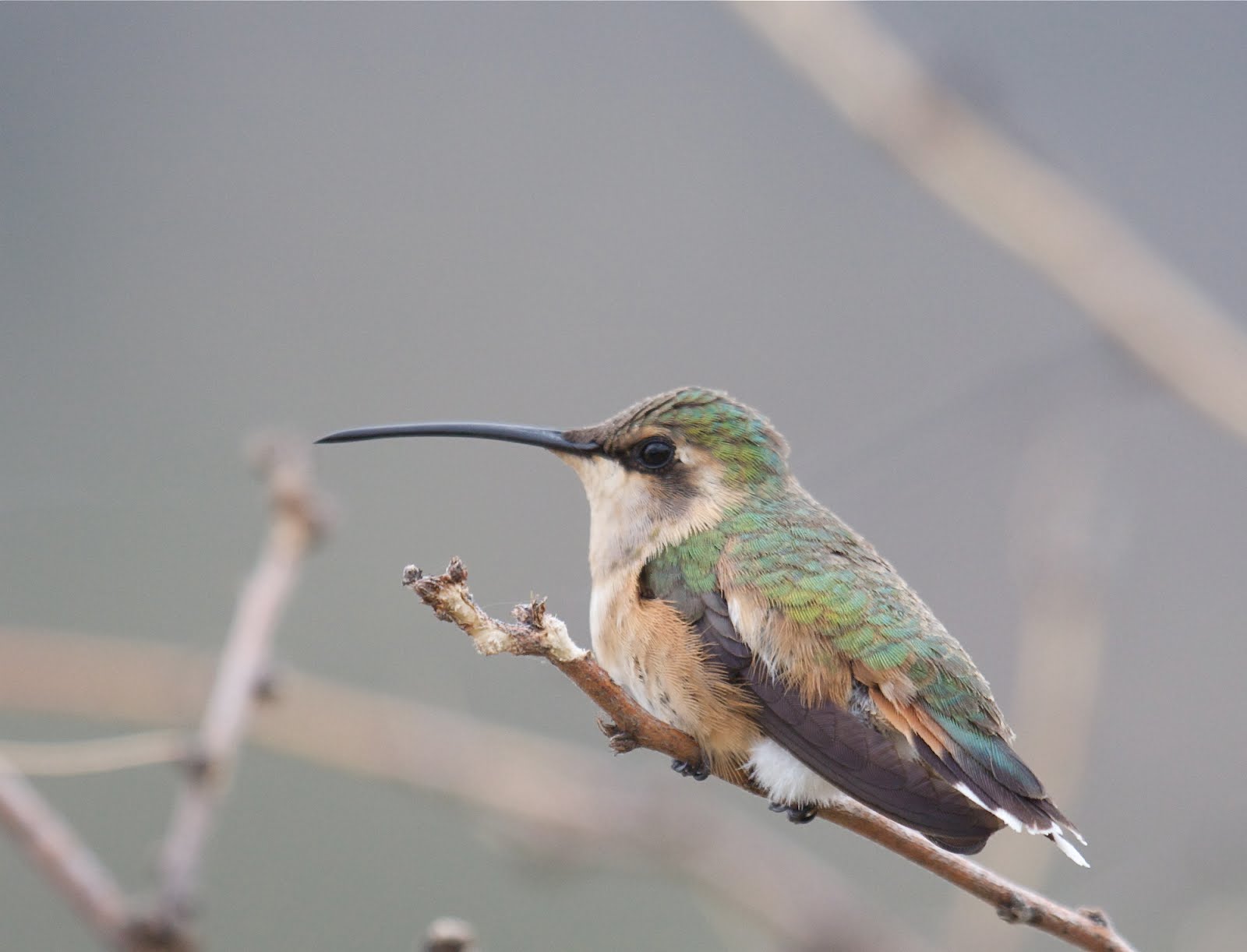Birding Arizona Itinerary
Day 0: Arrive in Tucson the night before the tour begins. We’ll meet for dinner and go over the plans for the first day.
Day 1: We’ll start bright and early with a morning run to the Arizona-Sonora Desert Museum. This will be a good intro to desert ecology and we’ll spend some time in their hummingbird aviary, going over hummingbird ID. Then we’ll head over to Sweetwater Wetlands for some waterbirds, Lucy’s Warbler, Harris’s Hawk, Abert’s Towhee and more.
The afternoon will be spent birding Tucson’s famous Mt Lemon where we’ll see our only Mountain Chickadees, Gray-headed Junco and Wilson’s Warblers. Night in Tucson.

Day 2: We’ll be up early and head to the Chiricahuas via Wilcox. A quick stop at Twin Lakes for some shorebirds, then down the Portal-San Simeon Rd to the foot of the Chiricahuas.
Afternoon birding around Portal and the lower reaches of Cave Creek Canyon. After dark, we’ll spend a few hours searching for Elf, Western and Whiskered Screech-owls, and possibly a Mexican Spotted Owl. Night in Portal.
Day 3: We’ll start the morning in the desert, looking for Thrashers, Roadrunner, maybe the odd Cassin’s or Botteri’s Sparrow, possibly a flyby Prairie Falcon. Then we’ll head up into the Chiricahuas with a stop in Paradise to look at Juniper Titmouse. Evening owling will take us to the highest part of the Chiricahuas to look for Spotted, Saw-whet and Flammulated Owls. Night in Portal.
Day 4: We’ll start the morning with a hike up South Fork to look for Trogons and other low-canyon woodland birds like Brown-crested and Dusky-capped Flycatchers, Hepatic and Summer Tanagers, Western Wood-pewee, Bewick’s and Canyon Wrens and more. Keep your eyes on the sky with a chance of seeing Peregrine and Prairie Falcons, Golden Eagle and Zone-tailed Hawk. After a successful Trogon hunt, we’ll head to the highlands to look for Olive Warbler, Mexican Chickadee, Pygmy Nuthatch, Red-faced Warbler and Greater Pewee. Evening owling for any owls we haven’t seen yet. Night in Portal.
Day 5: We’ll begin with an early morning run to the highlands to search for any highland species missed on the previous day. Then we’ll go down through Pinery Canyon and out to Whitewater Draw to look for the resident Great Horned Owls, maybe some more shorebirds and a few other things. Night in Sierra Vista.
Day 6: We’ll begin the morning at the famous San Pedro House, looking for Vermilion Flycatcher, Gray Hawk, Yellow-billed Cuckoo, possibly Green Kingfisher and Varied Bunting.
Then we’ll head for the canyons. No Arizona trip is complete without a stop at Beatty’s B&B at their famous hummingbird feeders where we’ll hope for a sighting of the extremely rare White-eared Hummingbird. Then we’ll head up into Miller Canyon to search for Mexican Spotted Owl and maybe a Goshawk, among other things. We’ll also make a stop at Ash Canyon B&B to watch for the increasingly rarer Lucifer Hummingbird. Night in Sierra Vista
Day 7: We’ll head on from Sierra Vista over to Patagonia where we’ll bird the famous Patagonia-Sonoita Creek reserve. The only place where Sonoita Creek runs above ground year-round. The target here will be Northern Beardless Tyrannulet, Gray Hawk and maybe a few other things. A stop at the old Paton House is a must. Here we may find Violet-crowned Hummingbird, Abert’s Towhee, Blue Grosbeak, Common Ground and Inca Doves, Tropical Kingbird, Thick-billed Kingbird and more. Then we’ll head over to Patagonia Lake State Park with a quick stop at the famous roadside rest where Rose-throated Becards nested for a number of years. Patagonia Lake State Park is well known for a number of desert species, including Varied Bunting, N Beardless Tyrannulet, various water birds, etc. We’ll hike the birding trail down to the lake and back. Night in Patagonia.
Day 8: We’ll start with a morning run to California Gulch in search of Five-striped Sparrow. Then we’ll stop at Pena Blanca lake on the way back for Least Grebe. Then we’ll head up to Rio Rico to check the flooded fields for Black-bellied Whistling-duck, on our way to Madera Canyon where we’ll check Florida Wash for Rufous-winged Sparrow before hiking up Florida Canyon for Rufous-capped Warbler, Black-capped Gnatcatcher and others. Then we’ll enjoy a leisurely walk up Madera Canyon, looking for any woodland species we may have missed. After sunset, we’ll look for Common Poorwill, and, if we’re lucky, the Buff-collared Nightjars of 2013 may return. Night in Green Valley or Tucson.

Day 9: We conclude our tour in Tucson. For those with early flights, we’ll drop you at the airport, but if you have an evening flight, we may possibly have time to head up to Phoenix to look for Gray Vireo and Le Conte’s Thrasher. This day will be played by ear with no concrete plans. Night: back home.
